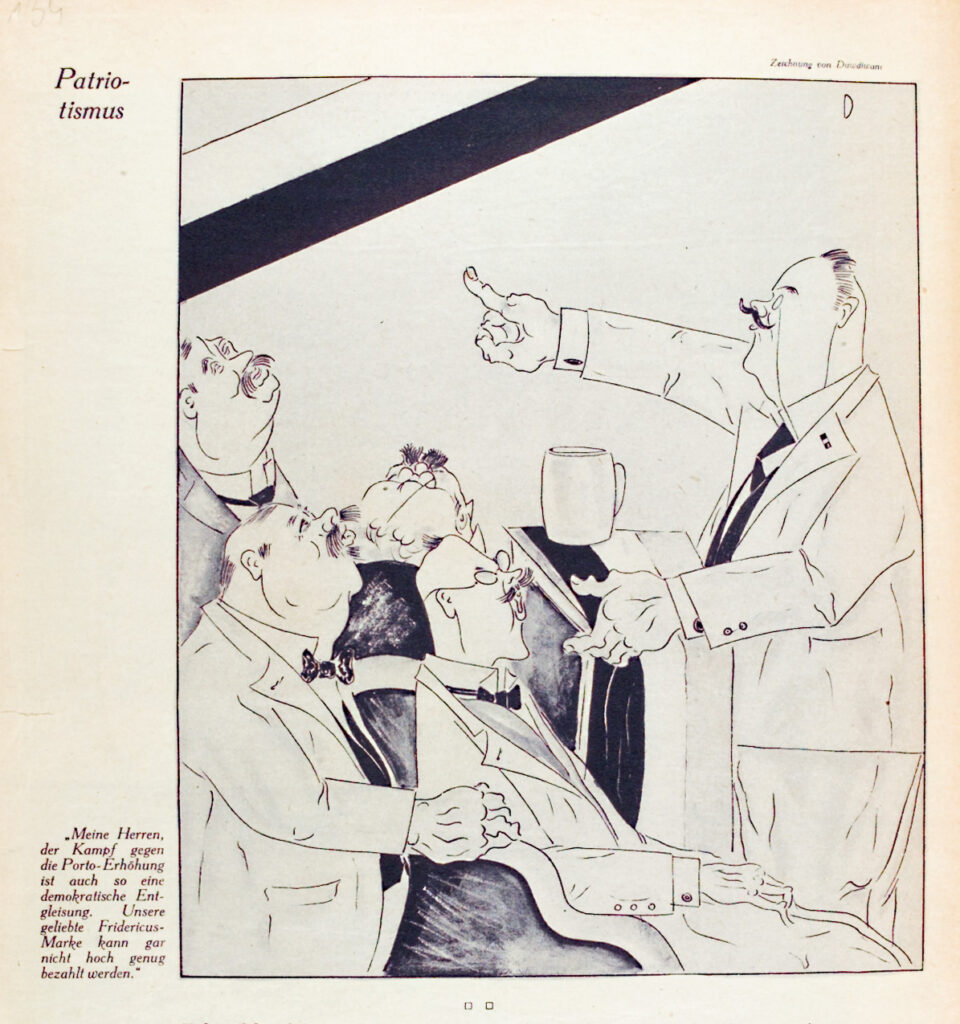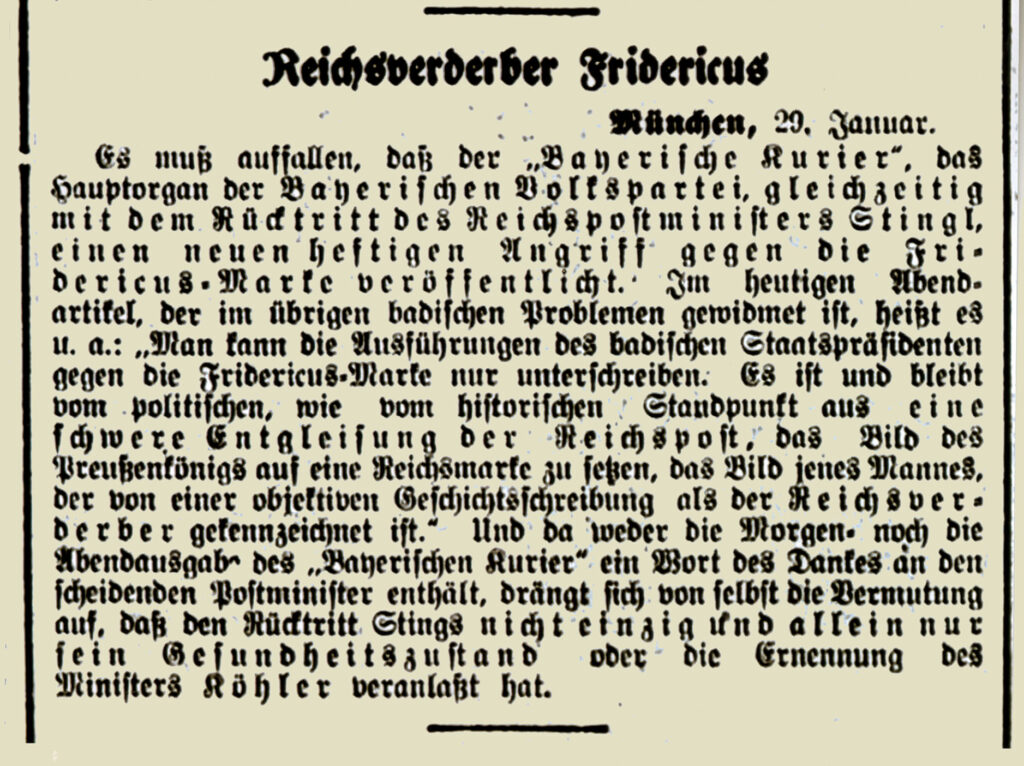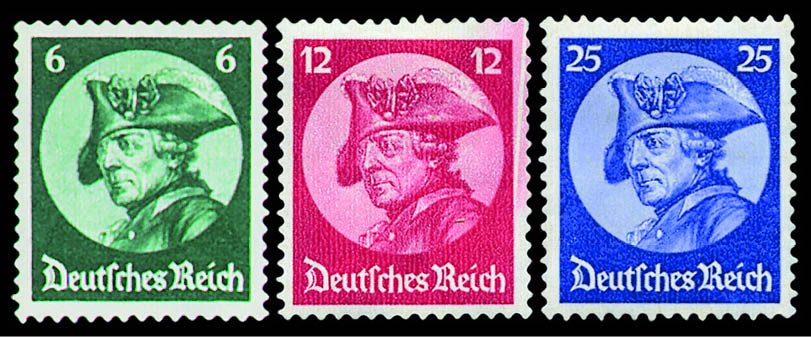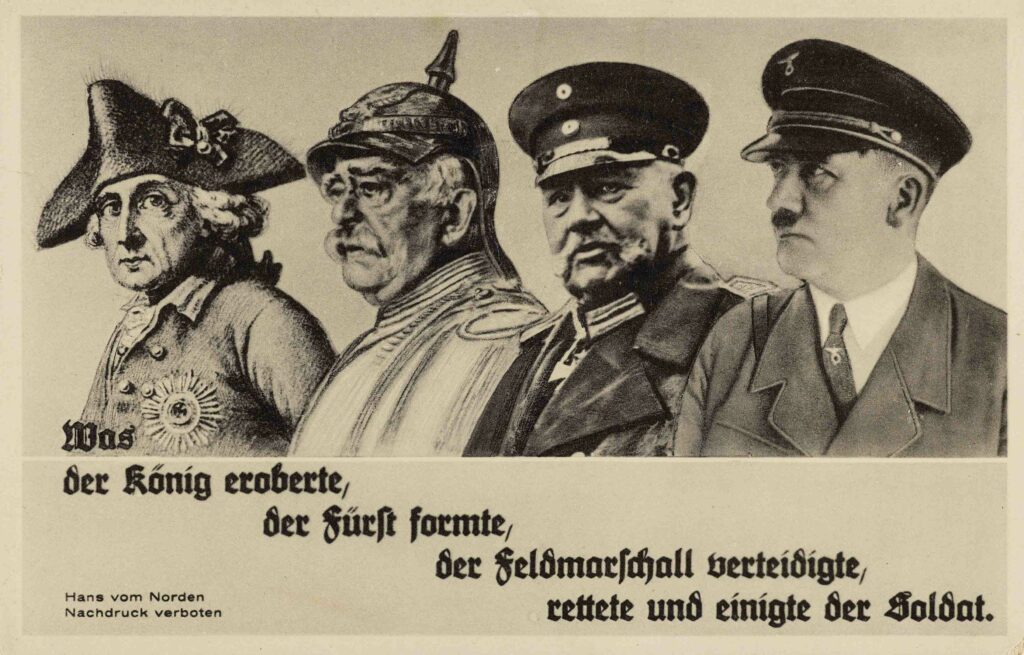“Imperial Corrupter Fridericus” and the Postmaster General
In the summer of 1927, a drastic increase in postal charges scheduled for October 1 sparked a heated debate. The business community was particularly upset and complained about rising operating costs in what were already difficult times.
“Imperial Corrupter Fridericus” and the Postmaster General
In the summer of 1927, a drastic increase in postal charges scheduled for October 1 sparked a heated debate. The business community was particularly upset and complained about rising operating costs in what were already difficult times.
Patriotism
“Gentlemen, the fight against the postage increase is also a democratic aberration. Our beloved Fridericus stamp cannot cost enough.”
At a right-wing conservative German National People’s Party (DNVP) event, the speaker emphasizes the unquantifiable importance of King Frederick II of Prussia for the German Reich.
In his cartoon about postal rates, Duwdiwani alludes to an event that took place only a few months before. On November 1, 1926, a new stamp series of the Deutsche Reichspost appeared under the title Heads of Famous Germans. This collection included images of Goethe, Schiller, Beethoven, Kant, Lessing, Leibniz, Bach, and Dürer. King Frederick II of Prussia had also included Reichspostminister Karl Stingl (1864–1936) of the Bavarian People’s Party (BVP) in this series.
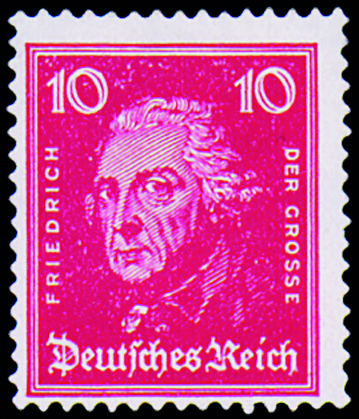
“Heads of Famous Germans”
The stamp series of the Deutsche Reichspost appeared on November 1, 1926, and was valid until June 30, 1933. The 10 pfennig stamp of Frederick II was based on a painting by Anton Graff (1736–1813).
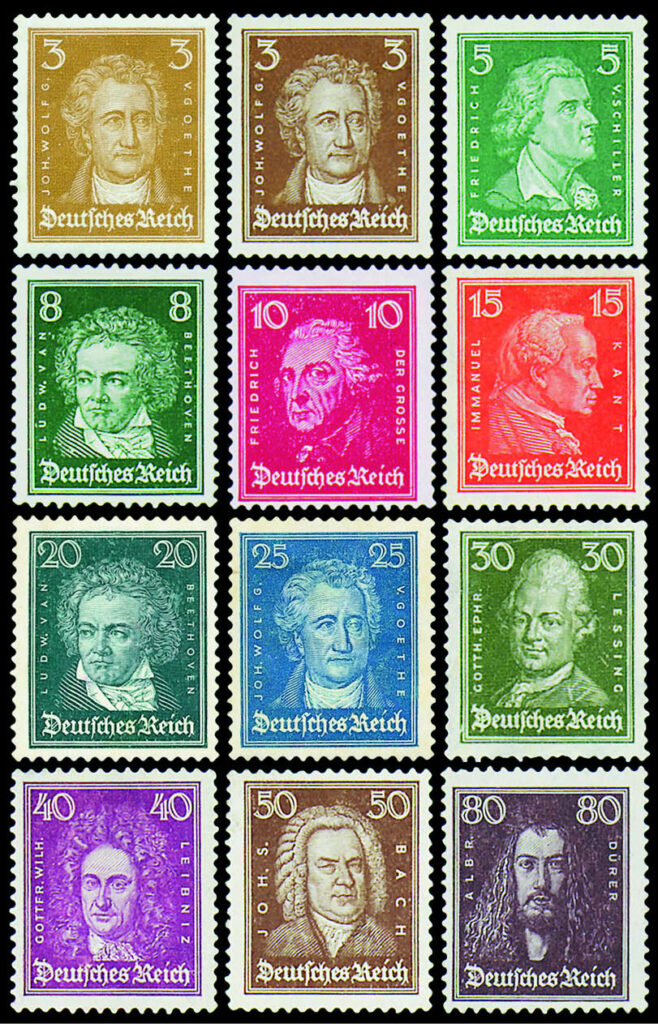
Otto Braun (1872–1955), the Social Democratic prime minister of Prussia, criticized “the fact that for some time the person of Frederick the Great, as well as the colors of the former empire, have been used not only to promote nationalism, but also to disparage the republic in the eyes of the population.” Political pressure from forces concerned about safeguarding the republican constitution increased, and Reich Post Minister Stingl was finally forced to resign at the end of January 1927.
Frederick II as a Symbolic Figure of National Socialism
On April 12, 1933, a few weeks after the Nazis seized power, a new stamp series was released, featuring an image of Frederick II. This image was based on a wood engraving by Adolf Friedrich Erdmann von Menzel (1815–1905) from 1859.
Propaganda postcard of the NSDAP
King Frederick II (1712–1786), Reich Chancellor Otto von Bismarck (1815–1898), Reich President Paul von Hindenburg (1847–1934), Reich Chancellor Adolf Hitler (1889–1945)
Manfred Knedlik: Reichspostminister Dr. Karl Stingl. Ein Beitrag zur Postgeschichte der Weimarer Republik. In: Archiv für deutsche Postgeschichte. H. 1/1992, S. 46–52.
Leonore Koschnick / Arnulf Scriba / Thomas Weissbrich (Hg.): Friedrich der Große. Verehrt, verklärt, verdammt. Katalog zur Ausstellung des Deutschen Historischen Museums. Stuttgart 2012.
